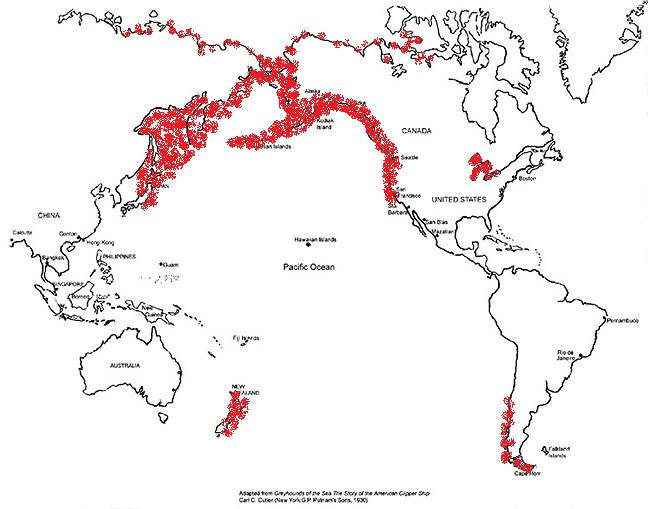Where do these things live?
Habitat- Chinook salmon have adapted to survive in both freshwater and marine environments. The salmon are born in shallow freshwater streams and venture downstream out into their ocean environment. This movement occurs once the fish have reached a larger, more mature stage in their life (see growth/reproduction). Once in the marine environment, Chinook can be found anywhere from the surface zones to depths of well over 100 feet. Typically, the salmon stay within 3-15 miles of the shoreline. After 3-5 years, the fish migrate back to their “birth stream” to spawn and eventually expire.
Range-The Chinook has modified its
lifestyle to live in a variety of watery habitats around the
globe. Naturally, the fish occupies the
Pacific coasts from 